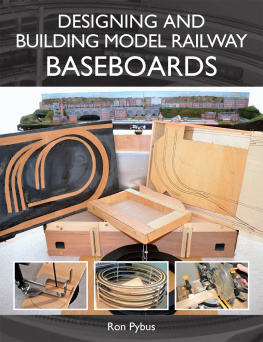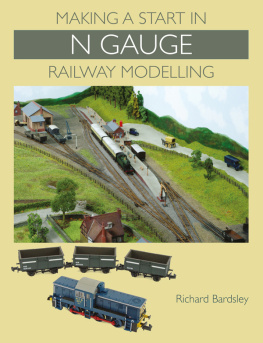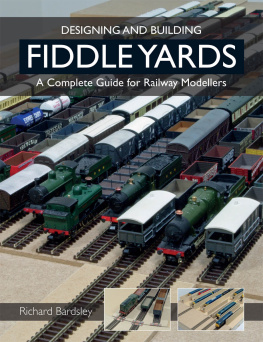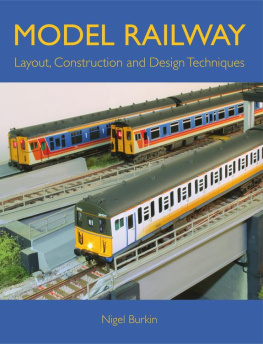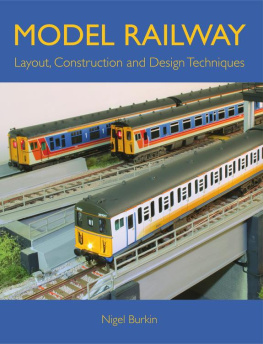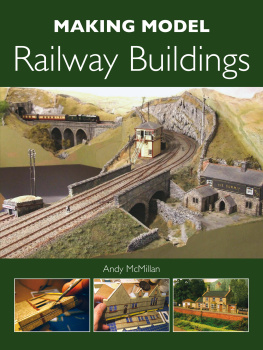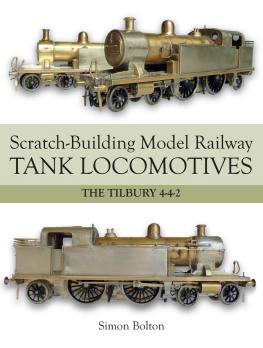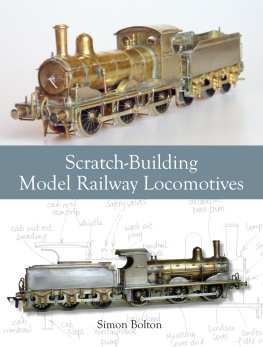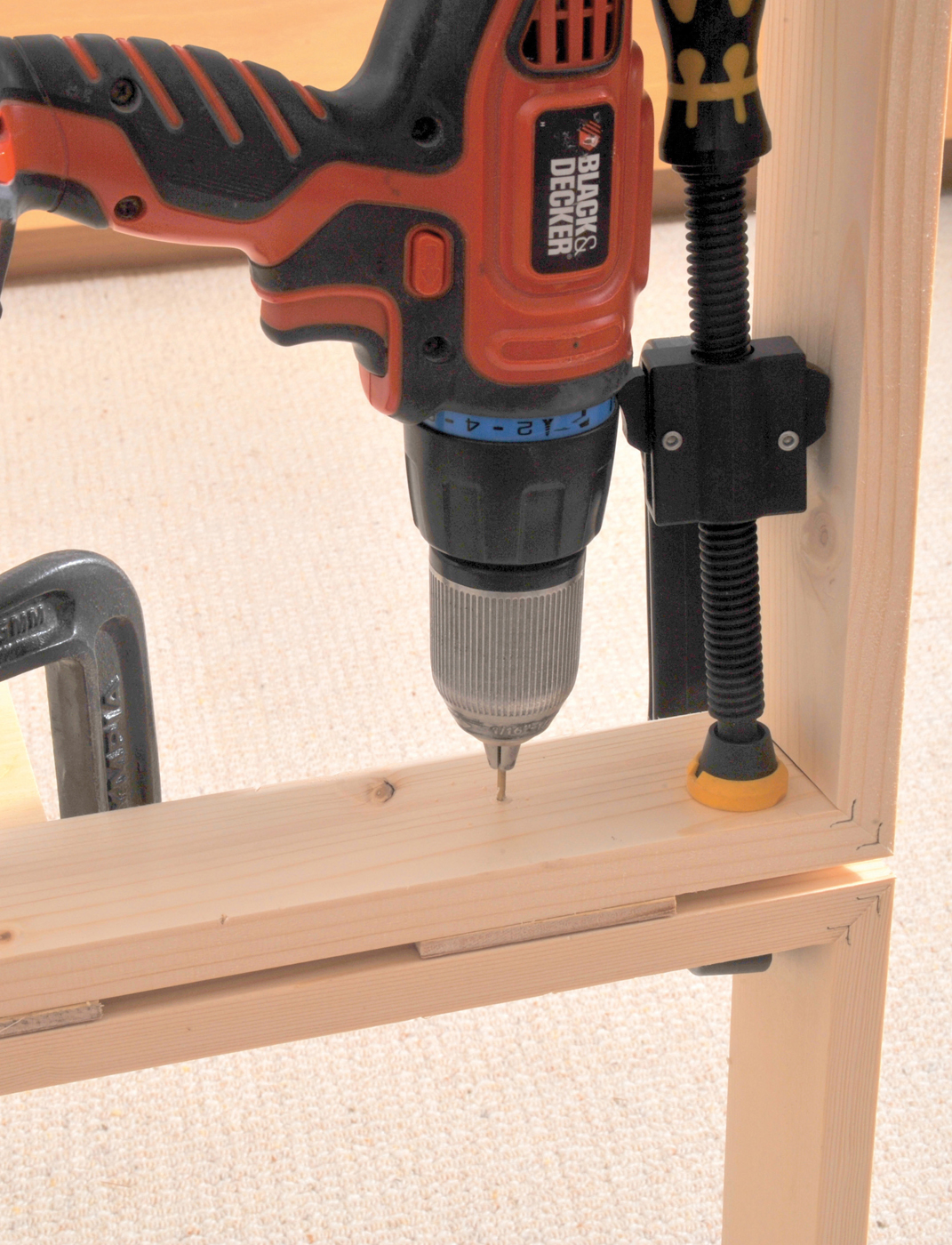
DESIGNING AND BUILDING MODEL RAILWAY
BASEBOARDS
Ron Pybus

THE CROWOOD PRESS
First published in 2015 by
The Crowood Press Ltd
Ramsbury, Marlborough
Wiltshire SN8 2HR
www.crowood.com
This e-book first published in 2014
Ron Pybus 2015
All rights reserved. No part of this publication may be reproduced or transmitted in any form or by any means, electronic or mechanical, including photocopy, recording, or any information storage and retrieval system, without permission in writing from the publishers.
British Library Cataloguing-in-Publication Data
A catalogue record for this book is available from the British Library.
ISBN 978 1 84797 870 7
Disclaimer
The author and the publisher do not accept any responsibility in any manner whatsoever for any error or omission, or any loss, damage, injury, adverse outcome, or liability of any kind incurred as a result of the use of any of the information contained in this book, or reliance upon it. If in doubt about any aspect of railway modelling, including electrics and electronics, readers are advised to seek professional advice.
CONTENTS
ACKNOWLEDGEMENTS
Thanks are due to the following for allowing me to take photographs on their premises or of their layouts, and to include them in the book as detailed below:
B&Q Chippenham timber cutting
Elite Baseboards construction of their baseboard
K. (Harry) Harper railway room layout (Penbooney
John Langley TV-based layout and briefcase layout
Model Railways Solutions construction of their baseboard and helix
Jean Morgan car roof top box layout
North Cornwall & Devon Model Railway Club table-top baseboard
John Roxburgh garage-based layout
David Shephard loft layout
Dave Simpson railway set (The Gas Cupboard, Trowbridge)
Mark Tucker garden shed based layout
West Wiltshire Model Railway Circle wall-mounted board and set of basic boards.
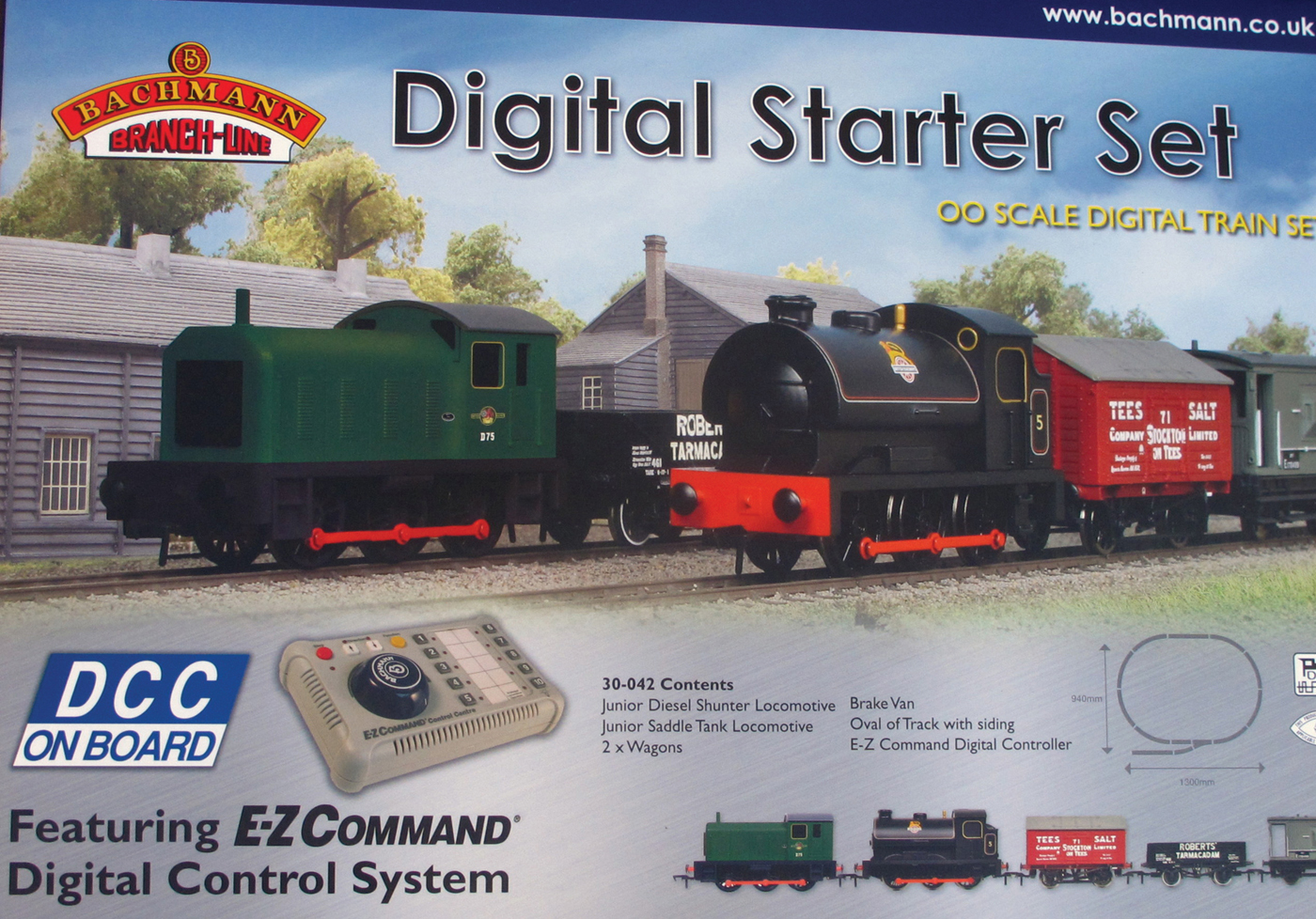
Typical initial train track set.
INTRODUCTION
It is probably fair to say that the majority of people who have any involvement with model trains, in any shape or form, started off in their childhood with a small train set given as a present at Christmas or at a birthday (see opposite). The usual scenario when the childs interest was brand new, would see the box being opened and the various contents removed. Having looked at all the rolling stock, the next stage would be a rush to clip the track together to form an oval. This was usually initially done on the floor or on a table covered with a protective cloth.
Track was easily clipped together and two tags were used to connect a battery powered simple controller. At the end of the session, the track would often be unclipped and put back in its box until the next time it was brought out and the process repeated. It was usually not very long before a point was added, thus creating a siding with the addition of a few more lengths of track. At the end this meant even more dismantling and I remember from my childhood that after a few outings, interest declined a little as the construction and dismantling, plus the occasional separation of the track during operation, reduced the time spent playing trains. This increased as the odd tunnel, signal and station were added, thus complicating matters even further. It is usually after only a couple of weeks before some sort of more permanent layout is required, so that the track can be put away, both safely and quickly, after each running session, and, in addition, there were usually fewer derailments when track was permanently fixed to a board.
The vast majority of people were introduced to model railways with the OO-gauge scale. In the 1950s OO was seen as a downscaling from the larger sized clockwork trains of earlier times. In the twenty-first century the N gauge has developed dramatically, both in quality and reliability, and this, coupled with smaller houses being the norm, has led to an upsurge in this smaller gauge. However, OO gauge is still the most popular. From the Far East have come the even smaller gauges of T and Z.
The same rules of baseboard design and construction apply to all. The bigger the gauge, the greater the size of the layout and the greater number of baseboards required to accommodate the same track layout. With O gauge there is a need to provide greater stability and greater strength to the baseboards than with other gauges, purely because of the weight of the locos and rolling stock. In practice this can be achieved by slightly increasing the thickness of the baseboard top and ensuring adequate lateral strapping.
Without some form of baseboard, playing trains will never expand to railway modelling and interest in the train set will decline over time.
CHAPTER ONE
GETTING STARTED
Railway modelling has many and varied interpretations and objectives. Some people just have an interest in running trains around a simple layout; others are more interested in getting as much track as possible on to any baseboard. Other people are more interested in creating an overall scene through which model trains happen to run, whilst still others are interested in reproducing a specific location and year in absolute accurate detail. Some are mainly interested in shunting wagons, whilst others prefer a main-line operation. Some want end-to-end operation, but others require continuous operation. Whilst American rolling stock and massive layouts are ideal for lots of modellers, there are just as many, if not more, who are only interested in British stock or even just Great Western locations and stock. The choice is yours. There are a range of modellers who are pushing the boundaries and creating layouts in a variety of containers and there are those who compete to create a layout that is more compact than any other.
Just as there are a wide variety of types of interest, there are almost just as many track sizes, from TT and Z gauges, through N and OO, HO and O, as well as all the narrow-gauge and fine-scale variations that exist. To the newcomer there is a bewildering array of choices and always someone on hand to tell you that their choice is the best, the most realistic, the most widely available, and so on.
One aspect that brings everyone together is the need for a solid baseboard on which to build a layout. This book is a guide to the design and construction of a variety of types of baseboards for railway modellers. It cannot be totally comprehensive as every single modeller with have his or her own needs for their layout in their situation.
As you have selected this book it is fair to assume that either you have decided to move on from a simple track that is taken up after each use and to put it on a more solid structure, or, more likely, that you wish to move into railway modelling with all that implies.
This book will take you from the very beginning through to the design and construction of a completed baseboard or set of baseboards for use in the home or for exhibition purposes.
Railway modelling requires a wide range of skills at different levels. These include design, choice of materials, woodwork, wiring, electrics, soldering, scenery construction and painting. This book will deal with all the skills required in the construction of the most important part of a model railway the baseboard.
Next page

